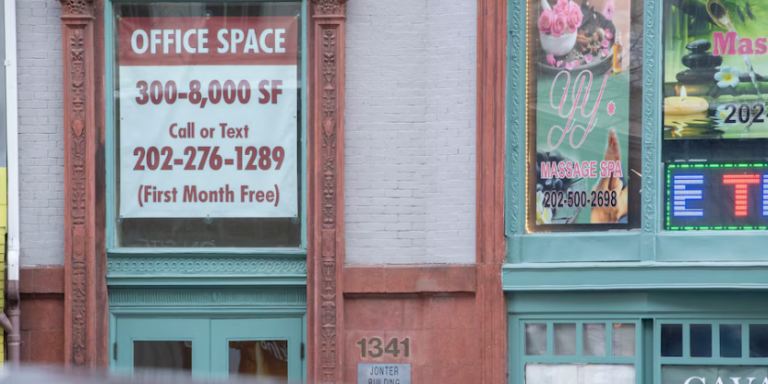Written by James Miller.
The looming maturity of over $900 billion in commercial real estate loans this year poses a significant risk to regional banks and municipal finances, marking a potential escalation from the challenges faced in 2023. With approximately 20 percent of all commercial loans due for repayment, the financial stability of various sectors, including office spaces, retail centers, and hotels, is under scrutiny.
A Turbulent Year Ahead
The recent financial distress of New York Community Bancorp, barely averted through a billion-dollar infusion led by a group including former treasury secretary Steven Mnuchin, has reignited fears surrounding the robustness of regional banks. These institutions play a pivotal role in underwriting commercial real estate ventures, and their potential vulnerability to loan defaults could trigger widespread financial instability.
Experts like Matt Reidy of Moody’s anticipate a challenging year, drawing parallels to the difficulties encountered in 2023. The commercial real estate sector, particularly office markets, faces acute risks. An estimated $17 billion in commercial mortgage-backed security (CMBS) loans are set to mature within the next year, with a significant portion presenting refinancing challenges due to factors such as lease cancellations and vacancies.
Borrowing Challenges and Silver Linings
Inflation and rising interest rates have compounded the refinancing dilemma for borrowers, who now face higher costs amid existing financial strains. While some sectors, like hospitality and industrial properties, have shown resilience or recovery, the office loan sector remains a point of concern. Moody’s projects potential difficulties in refinancing approximately $10 billion worth of CMBS office loans, which could dramatically increase delinquency rates.
The Extend and Pretend Strategy
A common strategy among banks and borrowers, known as “extend and pretend,” involves delaying loan repayments while maintaining the appearance of loan value stability. This approach, while beneficial during periods of low-interest rates, faces challenges with the recent hikes in borrowing costs, potentially leaving properties and loans valued less than their original worth.
Regulatory Vigilance and Market Outlook
Despite these challenges, experts and regulators maintain a cautious optimism, emphasizing that the commercial real estate sector’s troubles, while significant, are unlikely to threaten the broader financial system. The Federal Reserve is closely monitoring the situation, incorporating potential real estate losses into its financial stability assessments and banking stress tests.
Opinion
The impending crisis in the commercial real estate loan sector underscores the intricate relationship between property markets, banking stability, and economic health. As 2024 unfolds, it will be crucial for banks, borrowers, and regulators to navigate the challenges with foresight and flexibility. The strategic use of loan extensions and careful monitoring of market conditions can mitigate risks, but the sector’s underlying issues require comprehensive solutions that address both immediate financial pressures and long-term structural changes in how we use and value commercial spaces. Policymakers and industry leaders must work together to ensure that the fallout from loan defaults does not escalate into a wider financial crisis, preserving the integrity of regional banks and the broader economic landscape.



















